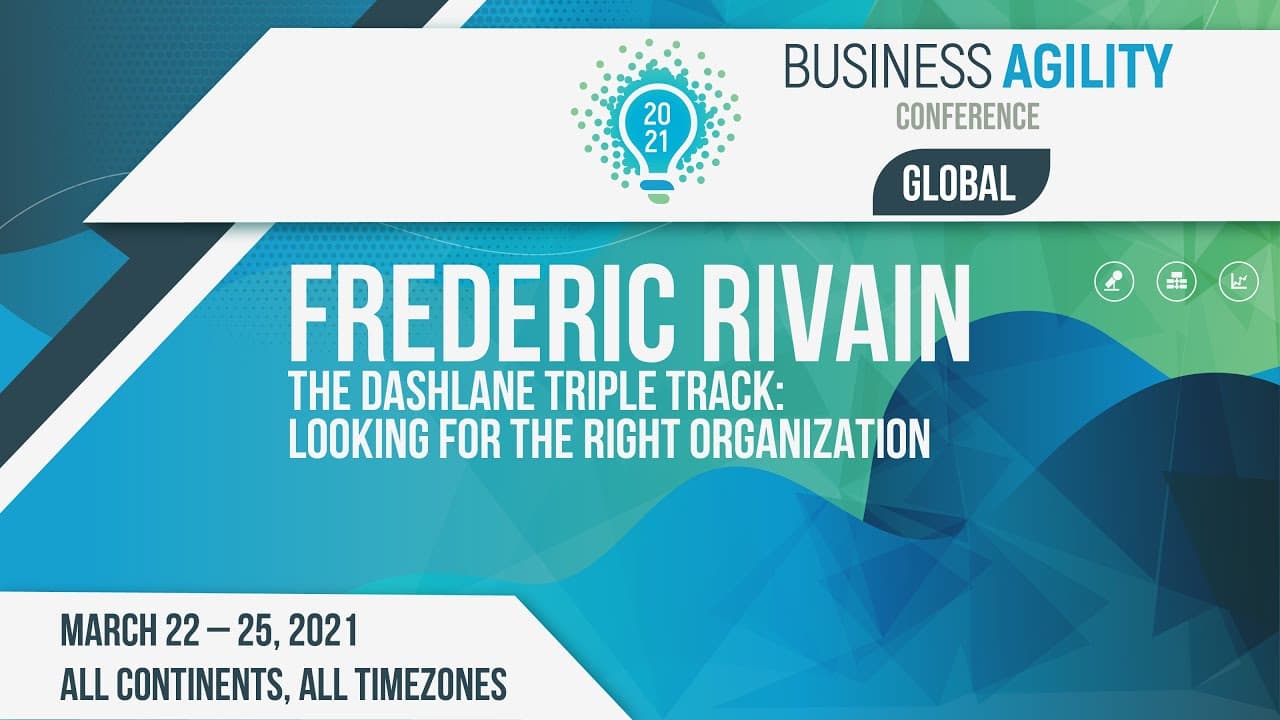And here we go! I hope you can all hear me well. The beauty of technology allows me to talk to you from Paris while you are in London. My name is Frédéric, and I’m the CTO of Dashlane. Who here knows about Dashlane? Feel free to let me know if you do.
We build a password manager to help you manage your digital identity in a safe and user-friendly way. Today, I want to share our story—how we evolved our organization over time. I hope you can learn from our successes but also from our mistakes and find some inspiration.
A Bit of Context
Dashlane was founded almost 12 years ago, and today, we have three offices in Paris, Lisbon, and New York. Our products serve both consumers (B2C) and enterprises (B2B). To give you a sense of scale, we have around 15 product engineering teams—agile teams—supported by an engineering team of 400+ members, including developers, QA specialists, Scrum Masters, and more.
Our journey with agile practices has been a series of iterative steps. As we grew, we adapted our organization to our needs, learned from past mistakes—of which there were many—and matured along the way. The key for us was practicing agility at the organizational level, always changing and adapting to the needs of our business while continuously improving and solving our pain points.
Early Days: The Garage Mode
In the early days, like many startups, we started in "garage mode." We implemented a classic Scrum approach by the book, introduced various tools such as portfolio roadmaps, and began practicing OKRs in 2016.
The big change for us came in 2017 when we switched to a feature team model, which we have been iterating upon ever since. Initially, we had a single track of work focused on business goals. Over time, we introduced a second track for technical work and eventually a third track with an actual feature focus.
These changes aligned with the growth of our business and team. For example, the Dashlane engineering team doubled in size between the end of 2018 and early 2020, going from 50 to 100 engineers. This presented opportunities to adapt but also introduced growing pains.
Finding the Right Organization Model
For me, it all boils down to finding the right organizational structure at the right moment—the one that provides maximum efficiency and value for our customers and business. It often feels like playing with building blocks, but by iterating, you eventually find the model that works for you at a specific point in time.
One of our challenges was avoiding "half-baked agility." I didn’t invent that term—it's from Felipe Castro. If you’ve never heard of him, I encourage you to Google his work on OKRs and goal management in the agile world. He explains that just using agile methodologies like Scrum or Kanban isn’t enough. You need to inject agile concepts at all levels:
- Tactics: How you generate ideas and prioritize projects.
- Strategy: Where OKRs come into play.
- Culture: The hardest part—the never-ending journey of building an agile company culture.
Most of our changes were driven by product and engineering, which is why strong partnerships between the CTO and CPO are crucial. However, the rest of the organization—CEOs, marketing, sales, customer support—is also a key stakeholder.
From Platform Teams to Feature Teams
It all started when we hired our first iOS engineer and began coding the Dashlane iOS app. Over time, a dedicated iOS team formed. We followed this pattern for Android, web, and other platforms. This setup worked well for small teams with clear stakeholders. At that time, we only had consumer products.
However, as Dashlane grew, synchronization between teams became complicated. We had too many stakeholders and product inconsistencies. A single team might be working on B2C marketing-driven projects, B2B sales initiatives, and customer support features all at once. Managing such diverse priorities was challenging.
Additionally, technical investment always came last due to business pressures. To address these issues, in 2017, we switched to a feature team model. These cross-functional teams were focused on specific business areas and had full ownership of their scopes. For example:
- A team focused on B2C acquisition, conversion, and retention.
- A team dedicated to our B2B offering.
Each team had a designated business stakeholder, such as our head of paid marketing for the acquisition team and our finance director for the conversion team. This setup brought business stakeholders closer to development teams.
Introducing Mission Teams
However, business-focused teams were too broad, making it hard to set clear objectives. We needed more focus and alignment. So, we introduced mission teams.
Mission teams were created to deliver on a single key objective while maintaining room for creativity and autonomy. Each mission team included representatives from various technical platforms as needed. Business representatives from customer support, product marketing, and other functions were added ad hoc.
Despite improvements, technical investment remained a challenge. Technical work still wasn't prioritized. We experimented with different approaches, such as allocating 10% of sprint time to technical topics or dedicating two days per sprint for engineers to focus on technical work. None of these methods worked perfectly.
Creating the Platform Squads
In mid-2019, we introduced a second track: platform squads. These squads focused on maintaining technical investment, while mission teams continued delivering business value. Around 25% of our engineers were allocated to platform efforts, led by tech leads. This ensured ongoing technical maintenance and improvement.
Adding Core Teams
By 2020, we introduced core teams to take long-term ownership of specific features. Core teams were responsible for feature maintenance, quality, and new feature development. This helped clarify responsibilities across the company.
The Three-Track Model
Today, our organization consists of three parallel tracks:
- Platform Squads: Dedicated to maintaining technical health and infrastructure.
- Core Teams: Long-term feature owners responsible for quality and innovation.
- Mission Teams: Temporary, goal-driven teams tackling specific business challenges.
Ensuring Alignment
With multiple teams, ensuring alignment is crucial. We follow four principles:
- Ensure teams are as autonomous as possible, minimizing dependencies.
- Each team drives its own roadmap based on OKRs cascading from company-wide objectives.
- Provide a shared framework of operations, including best practices and guidelines.
- Maintain synchronization through sprint reviews, planning sessions, quarterly check-ins, and demos.
Key Takeaways
Here are my four key takeaways:
- Technology serves customers and business—find the right balance of technical investment.
- Avoid context switching—it drains energy and efficiency.
- Treat your organization like a product—experiment, test, learn, and adapt.
- Focus on impact, not just delivery—what matters is the value you create.
This is the Dashlane story so far. Maybe I’ll come back in a year to share what happened in 2021. Thank you for listening, and feel free to try Dashlane if you haven't already!



